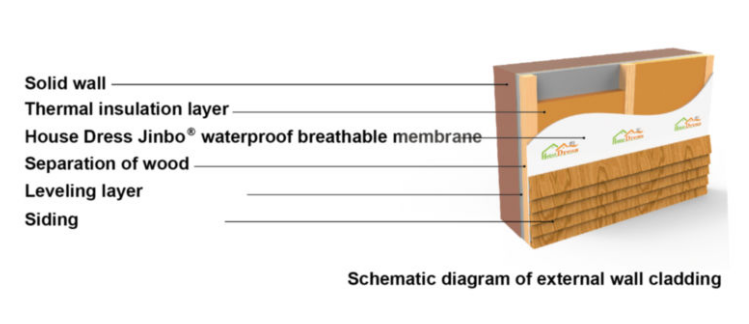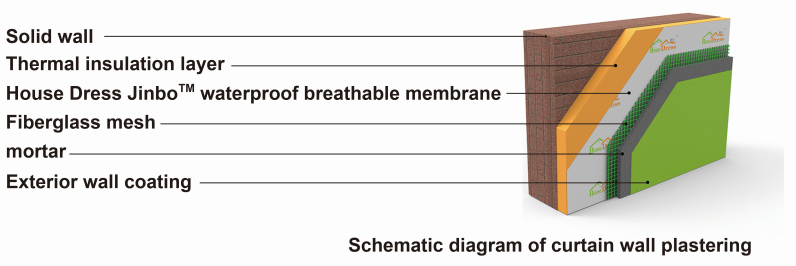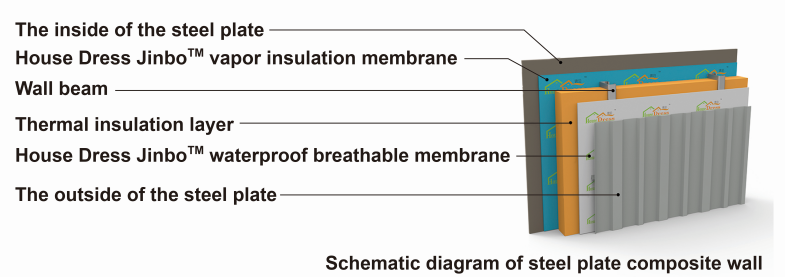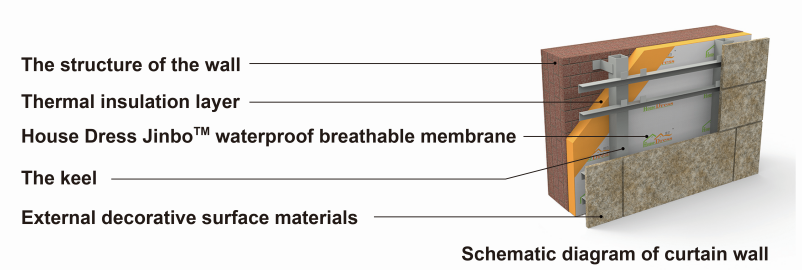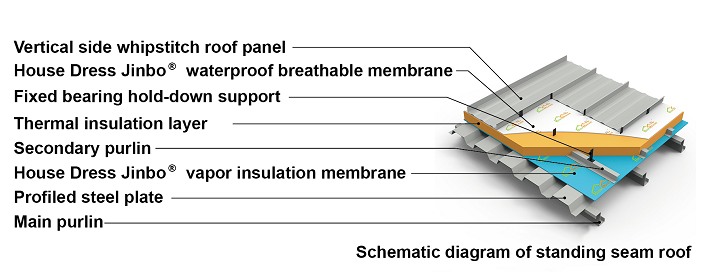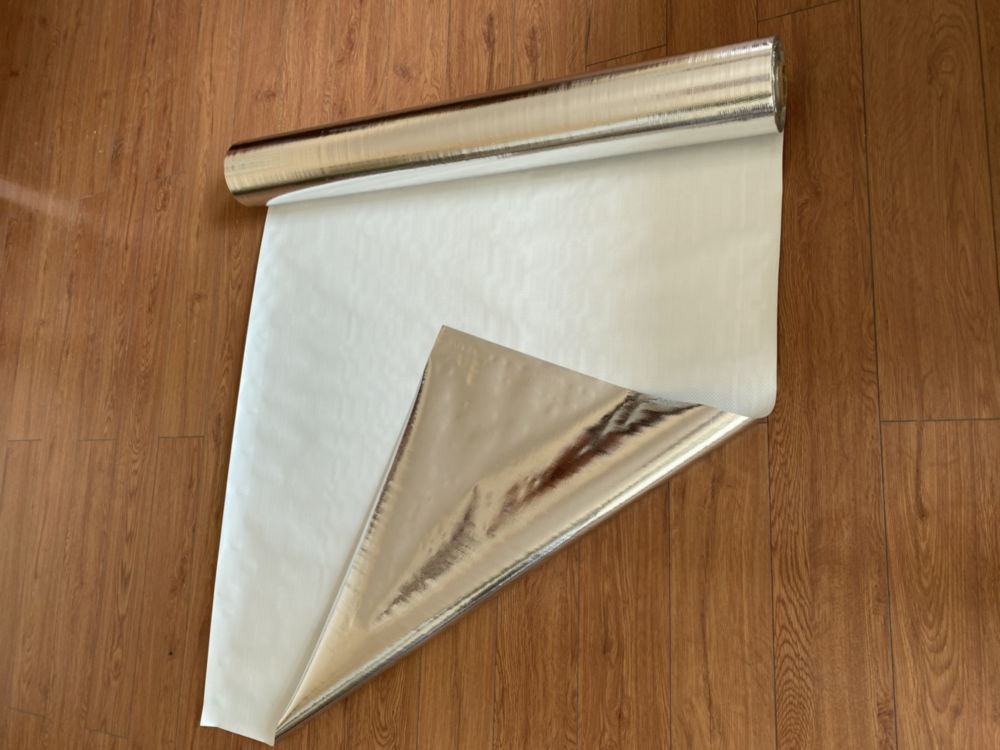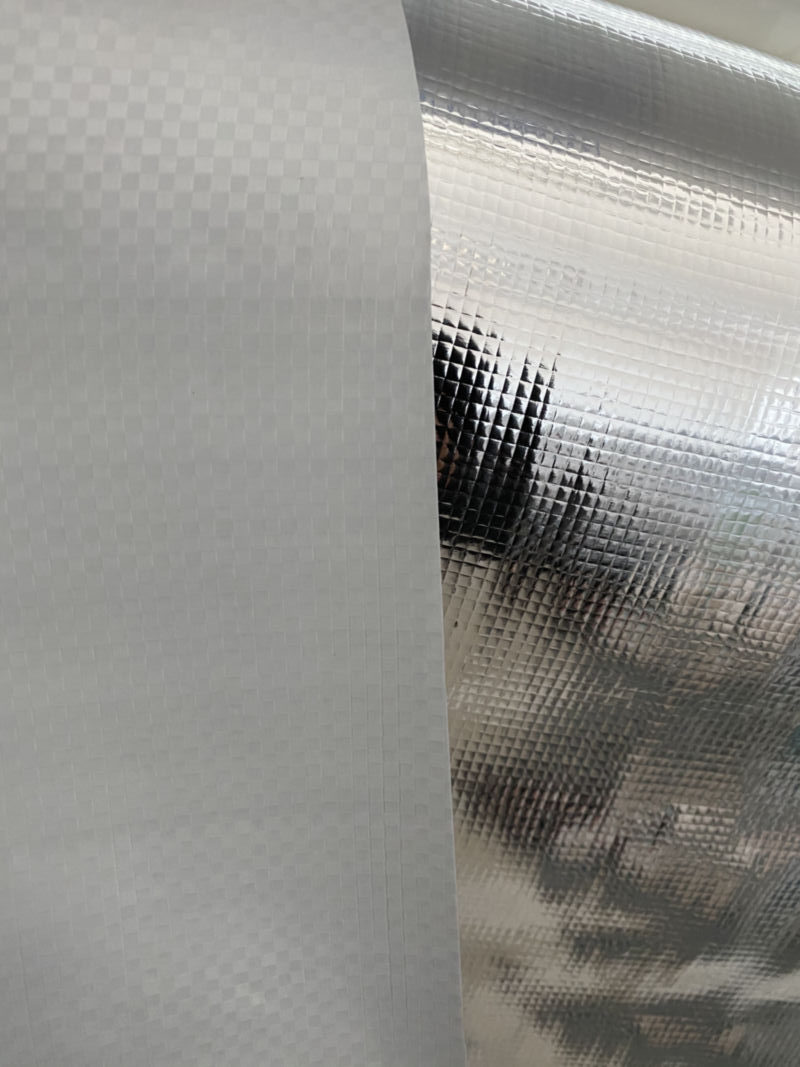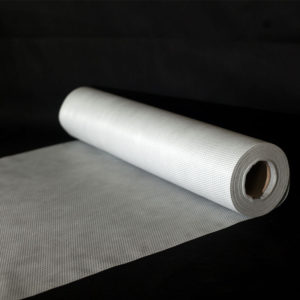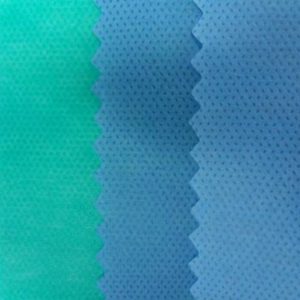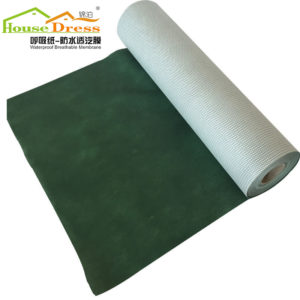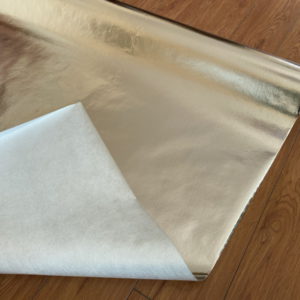Product Description
Product Feature
1.Non-toxic , light weight and environmental
2.Self-extinguishing when removed from the igniting flame
3.High tensile strength and durability, medium duty, heavy duty and extra heavy duty are available
4.With 97% heat reflection, heat barrier, water barrier and energy saving.
5.Ease of Installation
HouseDress Jinbo® reflection membrane is also known as barrier film, heat insulation film, heat insulation foil, heat extraction film, reflective film. It is made of aluminum foil + PP/woven fabric. The aluminum foil heat insulation has the functions of heat insulation, waterproof and moisture resistance. The solar radiation absorption rate (solar radiation absorption coefficient) of aluminum foil insulation coil is extremely low (0.07), has excellent thermal insulation performance, can reflect more than 93% of radiant heat, and is widely used in building roof and external wall insulation.
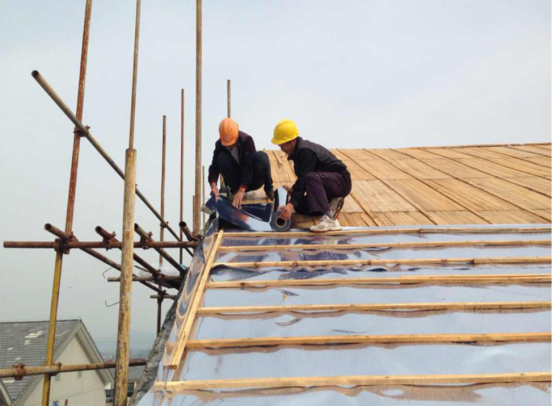
Classifications
Working principle
There are three basic ways of heat transfer: heat conduction, convection and radiation. The heat transfer of the building is mostly the result of the combined effect of the three methods.
Without refection film, the heat transmission route is as below:
Heat source — infrared magnetic wave — heat hits tiles to make the temperature rise — tile becomes heat source to radiate heat energy — heat hits the roof so that the temperature increases — roof becomes heat source and gives off heat — indoor temperature continues to rise
With Jinbo refection film, the heat transmission route is as below:
heat source — infrared magnetic wave — heat hits tiles to make the temperature rise — tile becomes heat source to radiate heat energy — heat hits aluminum foil so that the temperature increases — the radiation rate of aluminum foil is very low — indoor environment keeps comfortable temperature
Metallized layer reflecting infrared radiation contributes to the energy balance of the building by reducing the costs of maintaining a constant room temperature (heating and air conditioning). Also great as floor heating insulation.
Three-layer highly vapour-barrier, waterproof and windproof foil net enhanced provides great protection due to its high tear-durability.
This ensures maximum partition tightness of all types of roof structures, attic, inside walls, floors and ceilings. Quarantines thermal insulation and roof structure protection against moisture entering from the inside of the building, and capillary moisture floor protection. Foil prevents the growth of fungi causing mould.
Foil is highly resistant to aging. Additionally, membrane can be provided with scotch tape.
Application of reflective film
Application of exterior wall
Application of roofing
